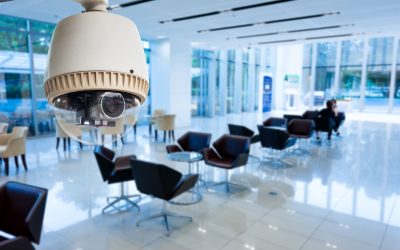In the bustling city of Salem, Oregon, commercial building automation systems (BAS) represent a significant advancement in how businesses manage their facilities. These sophisticated systems integrate various building functions, including heating, ventilation, air conditioning (HVAC), lighting, and security, into a single, centralized interface. This integration not only enhances operational efficiency but also contributes to significant energy savings and improved building management. This guide delves into the essentials of Commercial Building Automation Systems in Salem, OR, exploring their benefits, components, and implementation strategies.
Understanding Building Automation Systems (BAS)
Building Automation Systems are not just about convenience; they are strategic investments that can lead to substantial cost savings and operational efficiencies. Here’s what makes BAS essential for commercial facilities:
- Energy Efficiency: By optimizing building systems to run only when needed, BAS can significantly reduce energy consumption, which is a boon for both the environment and the bottom line.
- Centralized Control: Managers can monitor and control all connected systems from a single point, which simplifies operations and can lead to enhanced responsiveness to issues.
- Improved Security: Integration with security systems ensures that building access is controlled and monitored efficiently, enhancing overall safety.
- Data Analytics: BAS provides valuable data on building operations, which can be used to make informed decisions about maintenance, energy use, and more.
Components of a BAS
A typical Building Automation System in Salem includes several key components that work together to create a seamless operational environment:
- Sensors: Measure variables such as temperature, humidity, light levels, and occupancy.
- Controllers: Act on the data received from sensors to control heating, lighting, and other systems.
- Output Devices: These include HVAC elements, lighting, and alarm systems that respond to commands from the controllers.
- User Interface: This is where the human interaction with the BAS occurs, typically through dashboards that allow users to visualize and control the various systems.
Implementing BAS in Salem, OR
Implementing a BAS requires careful planning and consideration of both current and future needs. Here are some steps to guide the process:
- Needs Assessment: Evaluate what systems are essential for your particular building and what outcomes you expect from automating these systems.
- System Design and Integration: Work with a skilled contractor who understands the complexities of integrating various building systems into a unified automation system.
- Installation and Testing: Professional installation is crucial, as is thorough testing to ensure all components function as intended.
- Training and Support: Ensure that building managers and maintenance staff are well-trained in using the BAS. Ongoing support is also crucial for addressing any issues that arise post-installation.
Commercial Building Automation Systems in Salem, OR, offer compelling benefits for business owners and facility managers looking to enhance operational efficiency and reduce costs. By integrating critical building functions into a single, manageable platform, businesses can not only improve their operational footprint but also contribute to broader environmental sustainability efforts. Whether you are constructing a new building or retrofitting an existing one, considering a BAS can be a pivotal decision in how effectively you manage your commercial space.


